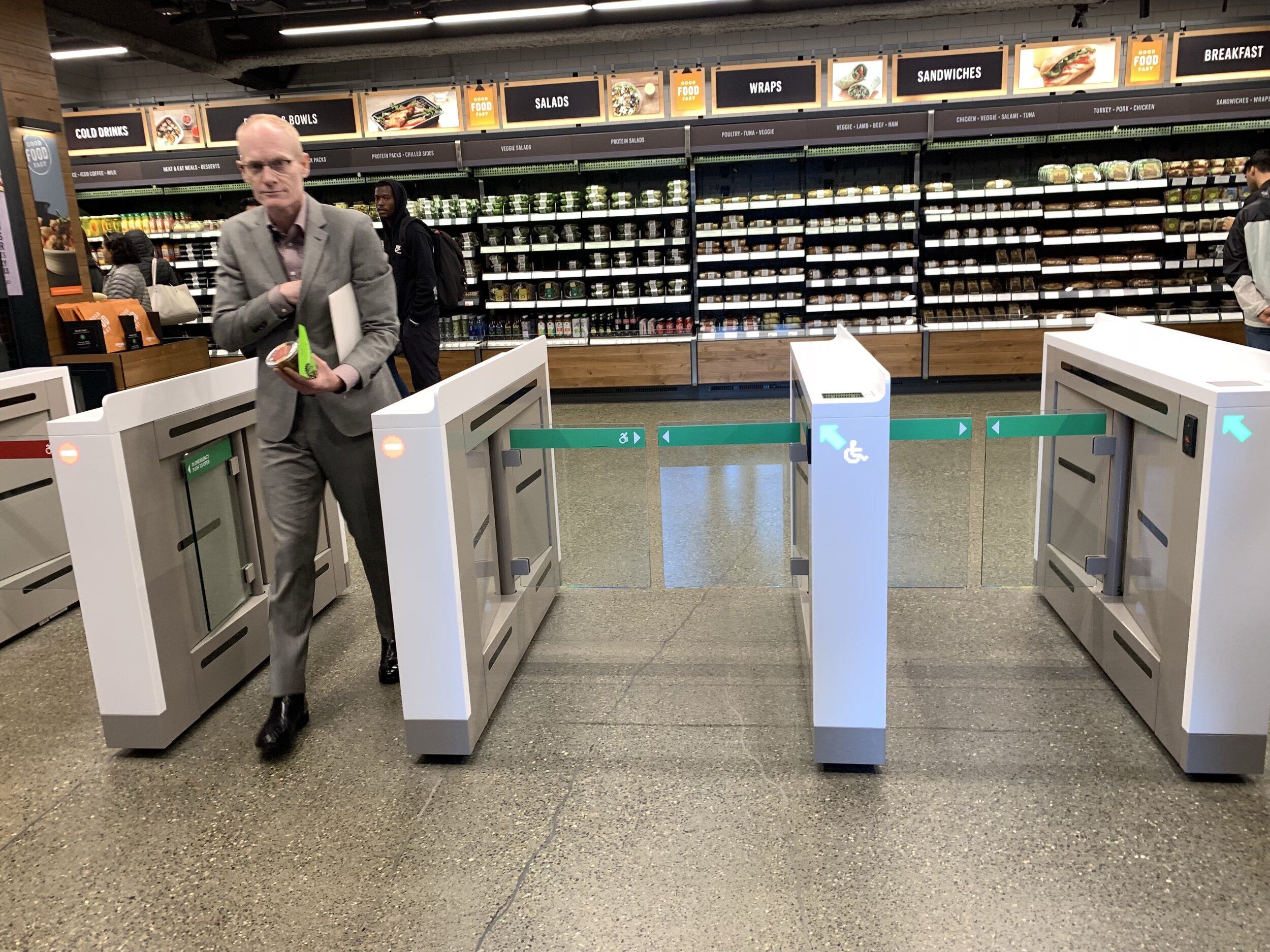Published in U.S. News & World Report
Amazon Go, a cashier- and cash-free shopping experience from Amazon, officially launched this week. By all accounts, the store is a technological marvel: Instead of checking out, shoppers check in with their cell phones at a series of gates that resemble those used for subways. When they're finished, shoppers exit through the same gates without the need to pull out a credit card or cash. Instead, the items are simply charged to the shopper's Amazon account. The ease of one-click-purchasing brought to a bricks-and-mortars experience, thanks to sensors and artificial intelligence systems powering the store.
For some, this represents a fun technological novelty offering more convenience for busy professionals. For others, it is symbol of dire concern: the rise of smarter machines that will bring about mass unemployment. Will the technology that powers Amazon Go lead to 3.5 million cashiers to lose their jobs?
By now, it is almost routine to see columns sounding the alarm about millions of existing jobs at risk of being automated. However, the real risk is that we do not have a system ready to equip people with the skills needed to fill millions of new and modified jobs that will result from the rise of AI.
AI is going to change the labor market in three important ways. First, automation will erode jobs further up the skills ladder. For example, Enlitic uses AI to analyze medical images such as with CT scans. In a test against three expert radiologists, Enlitic's system was 50 percent better at classifying tumors and had a false-negative rate of zero, compared to 7 percent for the human experts.
Second, AI will redefine many existing jobs. A Burning Glass analysis found a surge of "hybrid jobs" that blend technical skills with other skills or domains. For example, digital marketing combines technological tools with the domain of marketing. American manufacturers are now posting more jobs for software developers and engineers than production workers.
Third, AI will raise the skill level required for all jobs. Low-skilled jobs become higher-skilled when evolving AI tools become part of the work. Those who were formerly cashiers are still needed at an Amazon Go store, but for higher-skilled roles such as customer assistance. Human capital from education and training programs will depreciate at a faster pace, requiring continuous upgrading of skills to keep pace with the ways AI changes job functions.
Yes, some jobs will be eliminated as part of this wave of automation. But the more pressing threat is that the country is woefully unprepared to equip individuals with the skills required to fill millions of jobs that will either be created or already exist but will evolve.
We already see glimpses of this within labor market and wage data. According to the National Federation of Independent Business, 54 percent of small-business owners reported difficulty finding qualified workers. New jobs are also demanding higher levels of skills. The Center on Education and the Workforce estimates that over 95 percent of jobs created after the Great Recession went to workers with at least some college education. That, in turn, is driving up wages for higher-skilled jobs. The average income difference between those who have a college degree and those who don't has never been larger.
That gap will widen unless our workforce system becomes more agile in responding to employer needs and more flexible in serving students across all ages and backgrounds.
K-12 students will need multiple pathways to careers, not just college. Alex Hernandez, a partner at Charter School Growth Fund, compares our current education system to a game of "Chutes and Ladders," where career and technical education has been a ladder, "an off-ramp for students who ... were not succeeding in 'traditional' education." Career and Technical Education should become an option for all students, not just for those that the system has sorted as not being ready for college. For example, Carmen Schools of Science & Technology offers career-preparation programs to all students. In addition to traditional high school classes, students can earn certifications and college credits and even participate in apprenticeships with local companies.
Promising models like Kenzie are also worth considering. The new Indianapolis-based venture is creating a new type of program that combines work and school to teach nontechies, between the ages of 19 and 40, how to do software engineering. Students initially spend four hours a week learning programming, mostly through projects instead of lectures. At the end of six months, students will have enough training to be junior front-end developers, and then junior full-stack developers after another six months. Kenzie also offers a paid apprenticeship program where "Kenzie Studio Fellows" work on projects for companies. That's important for giving students real-life work experience, but also in helping with student placement. A student could conceivably work for an employer for 18 months before being hired.
While it's necessary to create more opportunities for people to learn new skills, it's also important to train companies to hire people based on skills. Opportunity@Work is developing pathways for overlooked Americans to gain skills that will open access to technical jobs around the country. Their TechHire initiative creates local ecosystems with job seekers, training providers, and employers working to identify needed skills and open positions, along with the training to secure those skills, and a system to verify the attainment of those skills. They are also working with employers to move past rough proxies of skills, such as college degrees and years of experience, and instead describe the specific skills needed for a job.
All three of these programs have some common features. First, while the skills gap may be a national problem, skills-training partnerships must be local to reflect regional employer needs. Second, these programs leverage project-based work, often with real employers, not only to better engage students but to ensure the curriculum is current and relevant. Finally, many of these systems are leveraging Income Share Agreements, which create a financial incentive for the providers to ensure students are employable and, ultimately, hired.
Policymakers, employers and community leaders must come together to not only improve the existing education and workforce system but also experiment with new models and approaches to help meet the diverse needs of employers and workers.








